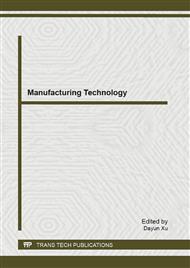p.348
p.352
p.356
p.360
p.366
p.372
p.377
p.383
p.389
Application of Least-Squares Support Vector Regression with PSO for CPU Performance Forecasting
Abstract:
The success of CPU performance prediction will make many benefits. This study adopts the least-squares support vector regression (LS-SVR) with particle swarm optimization (PSO) algorithm to improver accuracy of CPU performance prediction. LS-SVR with PSO, support vector regression (SVR) with PSO, general regression neural network (GRNN), radial basis neural network (RBNN), and linear regression are employed for CPU performance prediction. Empirical results indicate that the LS-SVR (Linear kernel) with PSO has better performance in terms of forecasting accuracy than the other methods. Therefore, the LS-SVR (Linear kernel) with PSO model can efficiently provide credible CPU performance estimated value.
Info:
Periodical:
Pages:
366-371
Citation:
Online since:
December 2012
Authors:
Price:
Сopyright:
© 2013 Trans Tech Publications Ltd. All Rights Reserved
Share:
Citation:


